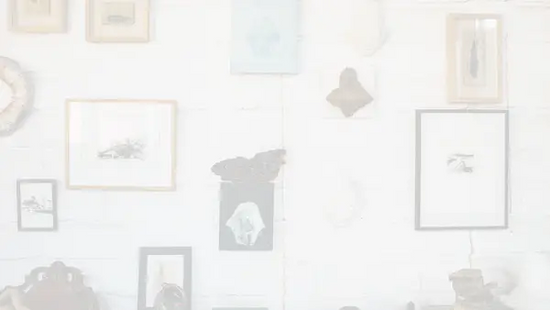Hanging a large mirror is one of the best ways to liven up an empty wall. Aside from reflecting light and making your space look bigger, mirrors also make great statement pieces. You can always rely on them to add some much-needed pizzazz to any space.
The thing is, hanging something big and breakable can be quite intimidating for most folks. But don’t worry, that’s where we come in.
In this article, we’ll teach you how to hang a heavy mirror in 5 easy steps.
How to Hang a Heavy Mirror
We’ve been doing this for quite some time, so allow us to walk you through the process. Before this day is over, you’ll be familiar with the different wall types, the hanging hardware used for mirrors, and of course, you’ll learn how to install a mirror on drywall.
Here’s a list of things you will need:

If you’re ready, let’s start!
Step One: Determine These Three Things
Before getting your hands dirty, you need to know these three important things: the wall type, the weight of the mirror, and the hardware needed.
Wall Type
Drywall, plaster, and masonry are three of the most common wall types that you can find today. Here’s a quick low-down on each of them:
- What is drywall?
Drywall, also called wallboard, is a building material used to create walls and ceilings. It comes in large rigid sheets and is used to make the interior walls of a house or building. Drywall is installed without using mortar or plaster.
- What is plaster wall?
A plaster wall is made from strips of wood or lath layered on top of each other. These layers are then nailed to wall studs and coated with plaster for a nice finish. Plaster is usually more expensive than drywall but it does offer better insulation, fireproofing, and soundproofing.
- What is masonry wall?
Masonry refers to walls that use brick, concrete blocks, structural clay tile, and the like. They are the most durable part of any building or structure.
Weight
If the weight of the mirror is not indicated by the seller, you can weigh it yourself using a bathroom scale. Knowing this will help you determine what type of hanging hardware to use.
Hardware
Once you’ve determined the wall type and weight of the mirror, it’s time to choose the compatible hardware. For mirrors, it’s best to choose medium to large hanging hardware that’s suitable for heavy items.
Some hardware options for hanging a mirror include: D-rings, hanging wire, wall hooks, anchors and screws, mirror mounting clips, and metal cleats.
Step Two: Get To Know Your Mirror Hangers
Since we’re on the topic, let’s dive deeper into the world of mirror hanging hardware. Here are a few that you should know of:
D-Rings
These are D-shaped steel rings held by a doubled-over heavy metal strap. We’ve got 2 variants available in store: a Wide 1-Hole D Ring which holds up to 25 pounds, and a 2-Hole D-Ring which holds up to 40 pounds.

Hanging Wire
D-rings are best used with hanging wires. You can choose from these three options:

- Traditional braided picture wire - strong yet flexible, this type of wire is made from interwoven strands of galvanized steel. It comes in 5 sizes and can support around 12-36 lbs. Use this type of wire for small to medium frames, canvas art, mirrors, and other wall decor.
- Vinyl coated stainless steel wire - this stainless-steel wire comes with a soft protective coating. It’s easy on the fingers but is still considered a high-strength wire. You can choose from three wire sizes which can hold 25-60 lbs. This wire is ideal for medium duty applications like plaques, wall decor, and picture frames.
- Stainless steel picture wire - as the name suggests, this type of wire is composed of 7 individual stainless-steel strands that have been twisted under tension. They’re very strong, but they’re not as flexible as the traditional variety. This type of wire can support items between 25-100 lbs, making it the perfect choice for hanging large mirrors and art.
Wall Hooks
Wall hooks may be small, but they’re best for providing security for heavier art and pictures. There are different wall hooks used for brick, concrete, plaster, and drywalls.

Anchor and Screws
An anchor is a fastener designed to provide a strong connection between the wall and the screws. There are many different types of anchors such as drywall anchors, plastic anchors, snap toggle anchors, and lead anchors.

Metal Cleats
Metal cleats come in pairs; one is attached to the wall while the other is secured on the back of the frame. They’re used to securely hang long and heavy objects like mirrors, bulletin boards, or art installations. To choose the right cleat for your object, check out this chart.

Step Three: Measure and Mark the Wall
Now that you’re familiar with the hanging hardware, let’s measure and mark the wall.
Let’s say you have a drywall, and your mirror already has D-rings attached to it. We will use anchors, screws, and hanging wire. Here’s what to do next:
-
Figure out where you want to position your mirror on the wall. For aesthetic purposes, make sure to check what it reflects.
Note that placing your mirror or art over a wall stud is helpful but not necessary as long as you have the right anchors. Once you’ve decided where to place your mirror, draw a line on top of the frame to mark the position.
-
Take your hanging wire and tie it to the D-rings at the back. Check out this quick tutorial on how to tie hanging wire on D-rings. Make sure you do this correctly so your mirror will hang securely on the wall.
- At the back of the mirror, measure the distance between the top wire and the top edge of the frame. Transfer that measurement to the wall by measuring down from the line you drew earlier. Make a mark for where the anchors will be located.
Step Four: Install the hardware.
With everything marked and measured, it’s time to install the drywall anchors. We know the word “install” might be intimidating but trust us, it’s easy. Plus, you’re almost done!
⚒️ How to Install Wall Anchors
Using the markings, all you have to do is to slowly drill the anchors into the wall. Then, insert the screw into the anchors. Make sure to leave a quarter of the screw exposed to secure the hanging wire. Check out the video above for your reference.
💡 PRO TIP: Before hanging up the mirror, apply bumpers to the back to keep it from slipping and to protect your wall from damage. Bumpers are easy-to-apply adhesive rubber parts attached to the back of a frame. They come in many different shapes and sizes. Now, you might be wondering, what if we use French Cleats? Don’t worry, it’s just as easy as installing D-rings. Let’s walk through the steps together.
⚒️ How to Install French Cleats
Installing French cleats is pretty straightforward. Steps 1-3 will teach you how to install the cleat on the wall, while step 4 will be all about installing it on the back of the mirror.
- Find a spot to hang your object. Lay the cleat on the wall and use a level to straighten. Draw a line tracing your cleat and mark the screw holes for your reference.
- Drill the needed holes on the wall using a power drill.
- Insert the wall anchors and drive in the screws with the cleat in position. Make sure that it is still level.
- Attach the other cleat on the back of the mirror. Lay the cleat against it, make sure it’s straight, and then attach the screws.
Step Five: Hang it up.
Now all you have to do is to hang your mirror, step back, and admire your handiwork. Good job!
Final Thoughts
That wasn’t so hard, was it?
You learned a new skill and expanded your knowledge on mirror hanging hardware. No need to call a pro! All you needed was a little guidance and self-confidence in learning how to hang a heavy mirror on drywall.
So, what’s your next hanging project? Let us know in the comments!










Picture Hang Solutions
December 05, 2022
Hi Thomas,
Thank you for sharing! I’m pretty sure that mirror would look beautiful in your wife’s salon. It’s good to know that you found our article helpful! And hiring a glass company would also be great, and definitely wouldn’t hurt. If you have any questions, please feel free to contact us. We are happy to assist.
Sincerely,
Picture Hang Solutions